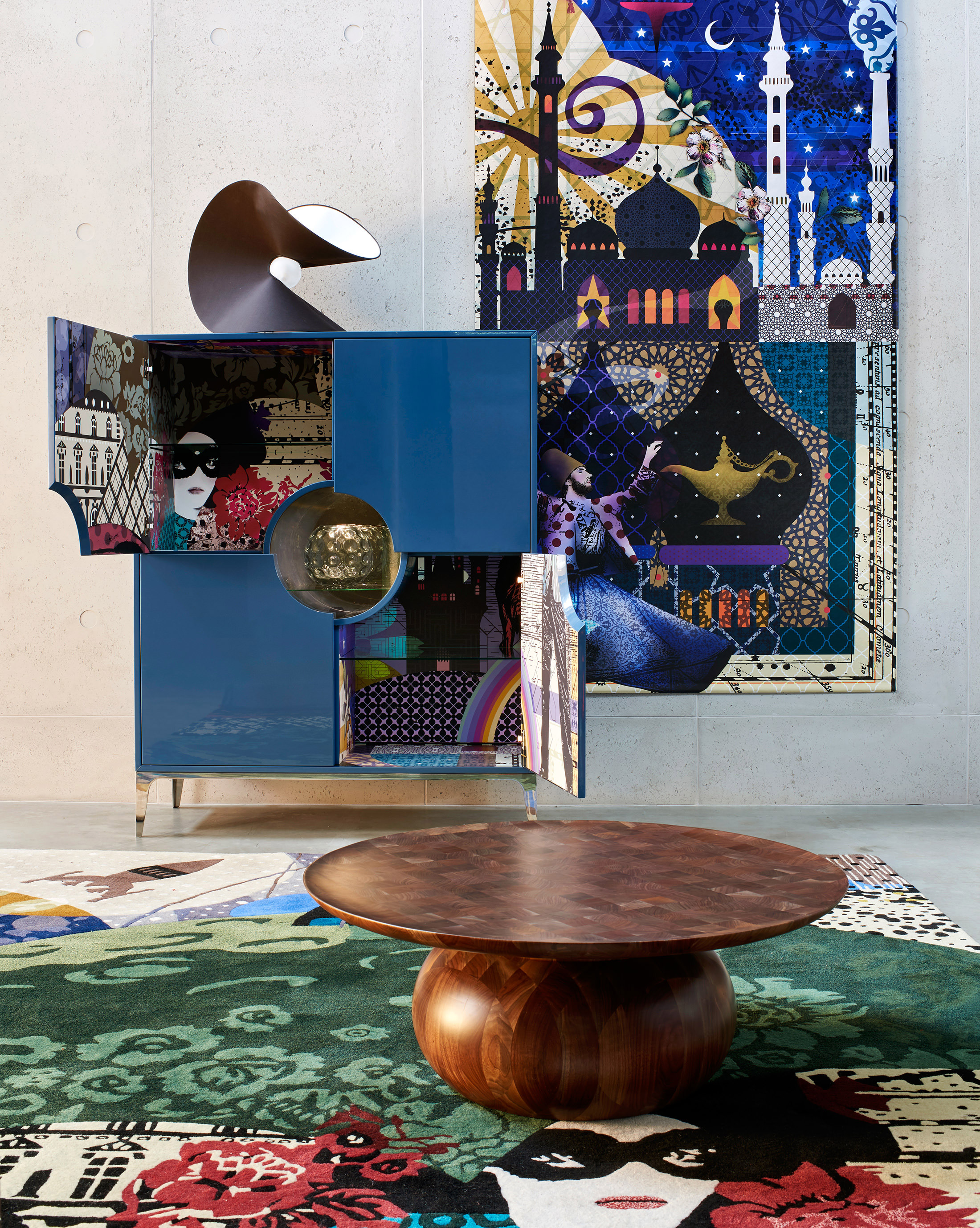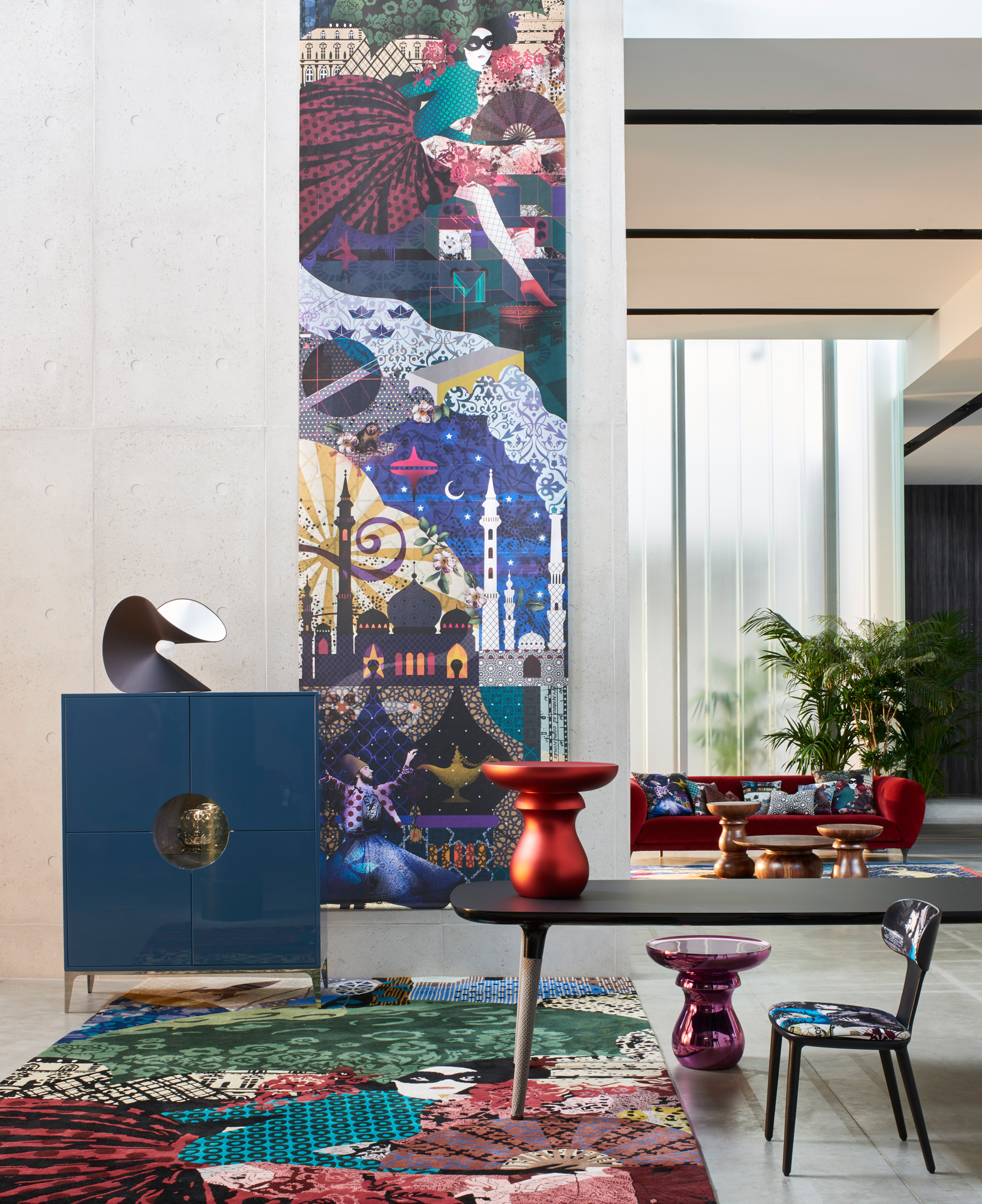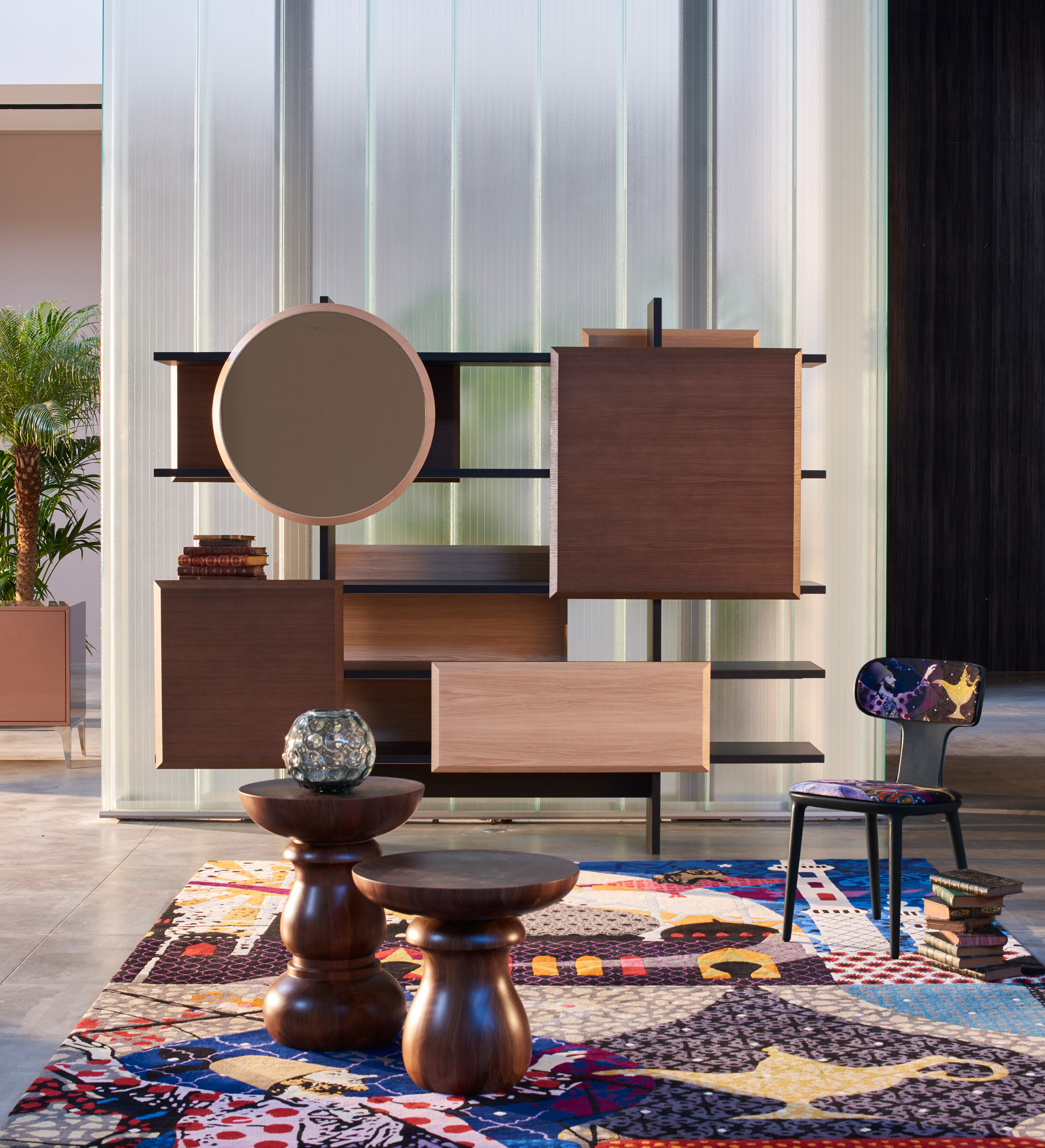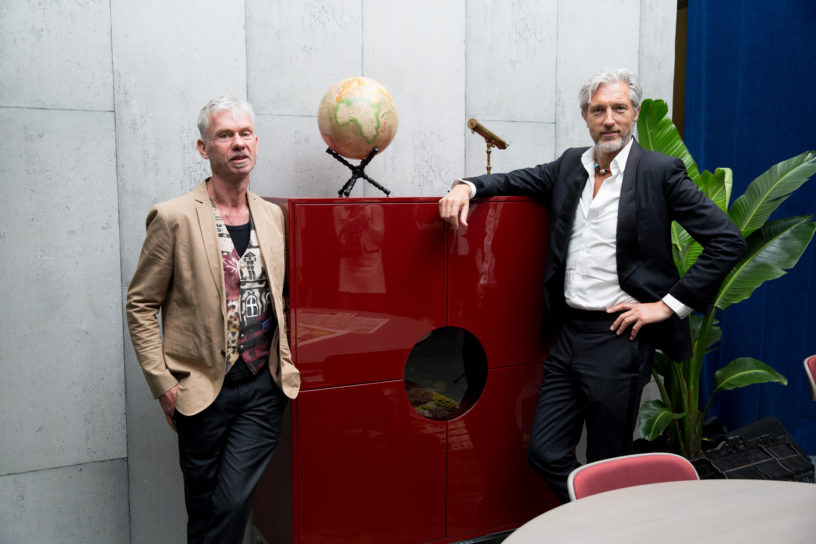-

The Globe Trotter collection is a collaboration between Roche Bobois and Marcel Wanders.
-

The heart of the Globe Trotter collection is a fresco depicting a magnificent voyage to a wonderland.
-

The motif can be found throughout the collection.
-

The Wonder cabinet and La Parisienne dining table add a worldly touch to shared spaces.
-

The Dojo cabinet is an unforgettable statement piece.
-

Chess piece-inspired end tables dot the collection.
Marcel Wanders for Roche Bobois
The Globe Trotter collection collaboration.
To hear Marcel Wanders speak is to be enraptured. “Design is about people. What do people want? The deep driving force is that we want to be loved. And the shortcut to being loved is to love.” His zestful language serves to punctuate his opinions. “People show their love for the things they care about. It’s an orgy of giving, in a way.” The 55-year-old Wanders has a youthful sense of wonder and a bold streak of humour. “As a designer, we are trained to read between the lines. We can see a story that is not there and a story that’s there. We can see stuff. We are amazing—we see stuff that’s not there.”
Wanders has attracted all sorts of superlatives. Fun is a big part of what he does, but he also means business. (The Dutch designer completed his MBA in 2014 in part, he says, “to better understand my clients.”) His work has been exhibited at the Museum of Modern Art in New York and the Stedelijk Museum Amsterdam. His breakout piece was the Knotted Chair, which he designed 22 years ago. It is made of aramid and carbon fibre cord treated with epoxy resin for rigidity. It looks like handcrafted macramé. Wanders has created other classics, too. He has designed for Alessi, Baccarat, and KLM, the Dutch airline; his Airborne Snotty vases are in the form of snot spatter emitted during a sneeze. And the shape of another vase was created by stuffing a latex condom with hard-boiled eggs.
Fun is a big part of what Marcel Wanders does, but he also means business.
“A lot of designers are like, ‘No. I would never design that. I would never do such a thing.’ That is a bit of a defensive way to decide who you are,” says Wanders. “I am not afraid to do something that is new to me because I know I can only do it my way. So, I am not afraid to change what I did yesterday to do something different tomorrow because I know I can only be true to myself.”
The nerve centre of the Wanders design empire is in the creative capital of Amsterdam. The designer’s studio occupies a converted school, where a team of 70 staffers from around the world develop new goods. Interior designers, industrial designers, graphic designers, visualizers… Wanders creates fantasy worlds and is the type that throws away the rule book; his style is equal parts whimsy and decadence.
In joining forces with celebrated French furnishings line Roche Bobois, he created the Globe Trotter collection, which draws inspiration from fabled adventurers and audacious inventors. Chief among these are the Montgolfier brothers, inventors of the hot air balloon—a silhouette embraced throughout the collection. First showcased at Salone Internazionale del Mobile in Milan earlier this year, the Globe Trotter collection “is a tribute to the adventurer we all dreamed of being. Travel is a transformative experience, and we wanted to capture the feeling of collecting worldly treasures with each piece,” says Wanders.

Nicolas Roche, left, and Marcel Wanders, right, at the Roche Bobois showroom on Madison Avenue in New York.
Roche Bobois has a long history of collaborating with creatives—Jean Nouvel, Christophe Delcourt, Jean Paul Gaultier, and beyond the French realm with Kenzo Takada, Stephen Burks, and even MissoniHome. This is a blueprint that has worked well for Roche Bobois, and it is one that Nicolas Roche, creative director for the company founded by his father and uncle, is content to continue. “I consider myself more like a conductor,” says Roche, who is an architect by trade. “The general principle is to go and find the best designers most adapted for Roche Bobois, and develop new products and collections with them.”
The Roche Bobois world that Wanders has created with the Globe Trotter collection includes the Montgolfière sofa and ottoman; Mariposa light collection; the Dojo lacquered bookcase; La Parisienne table with legs dressed in fishnet stockings, emblematic of the cancan dancers of Paris; Chess cocktail and side tables evocative, as the name gives away, of giant game pieces; and Opérette chair with a selection of Marcel Wanders fabrics showcasing different worldwide destinations.
“The idea was not to make a chair or a table,” says Wanders of his approach, “but to make a universe.” As such, “I asked the team to bring things they like—drawings, twigs, flowers… all kinds of stuff. All these things collected was the start of our world.” The heart of the Globe Trotter collection is a fresco depicting a magnificent voyage to a wonderland, with this motif adorning tufted rugs, cushions, and furnishings, along with the interior of the Wonder cabinet and buffet. The entire project took a year and a half to realize, but it was after the initial meeting between Wanders and Roche that “I understood,” says 58-year-old Roche, that “[Wanders] was not here to make a Marcel Wanders collection, but a Marcel Wanders for Roche Bobois collection.”
“Design is as deep as our culture. It is as deep as our human development.”
Roche, a lifelong Parisian, was born into the “milieu of contemporary furniture.” Reared in aesthetically interesting surroundings and after having worked as an architect for the better part of his life, “I thought it was interesting to have a second act and join the family business, although I had said I would never do so before.” Roche Bobois has undergone a revival in the 13 years that Roche has been in charge. Globally the company has grown to 255 showrooms in 60 countries, but all the while it has remained focused on being a design company, different, as Wanders points out, from many of its Italian contemporaries that should be likened to style companies.
“Design is as deep as our culture. It is as deep as our human development. It is who we are,” says Wanders. “You can over-intellectualize a piece, but the principle of design, the principle of culture, the principle of human connection, the principle of creation… I think design itself underestimates the depth of what we [human beings] do.”
As a child, Wanders would make people gifts. “I coloured and maybe I’d write something—most gifts I made were pretty useless. But I made the connection that if I make something for someone, then they think I am sweet and wonderful. I’m sure I got a little addiction,” he confesses. Wanders is sweet and wonderful, and his creations are now prized and collectible.
_________
Never miss a story. Sign up for NUVO’s weekly newsletter.




